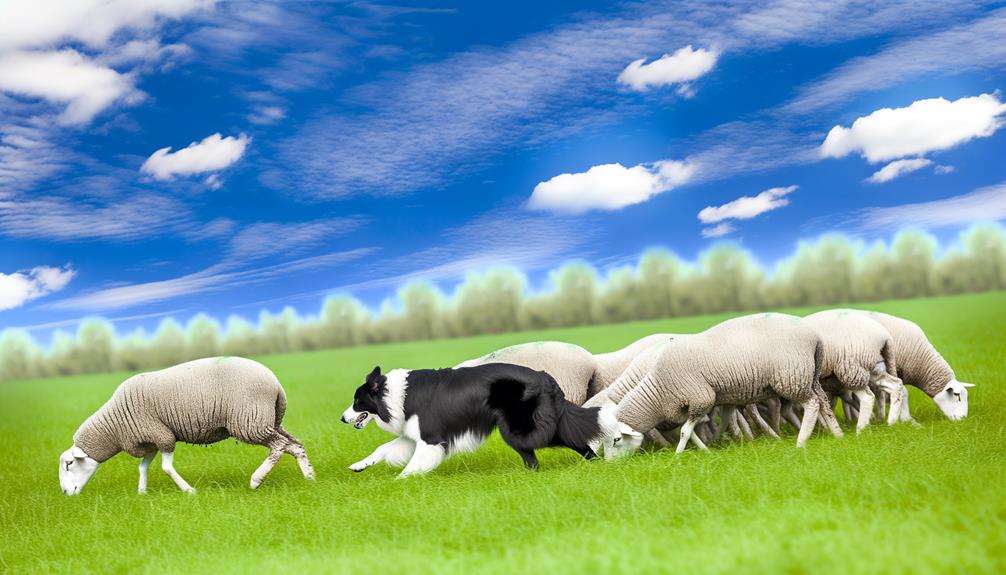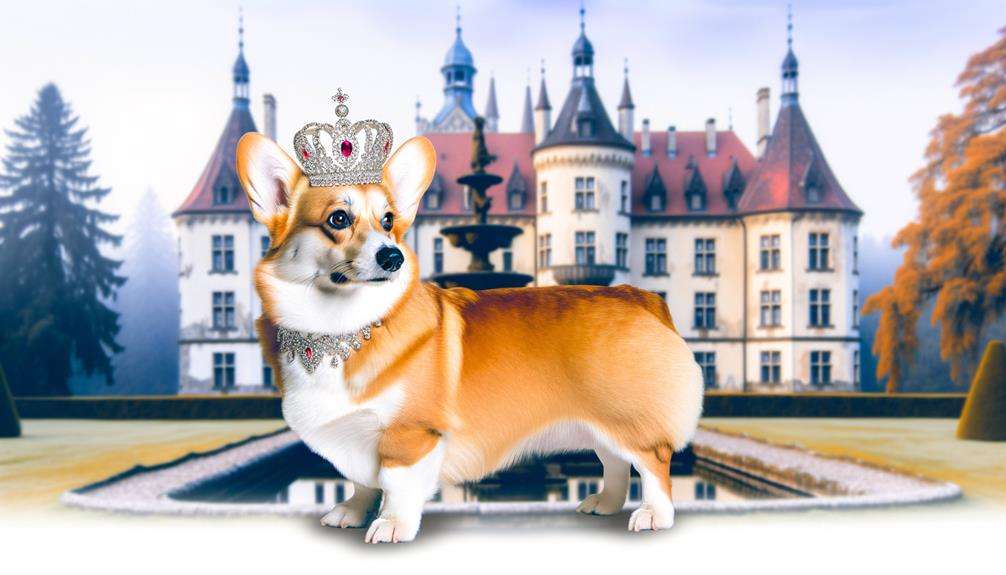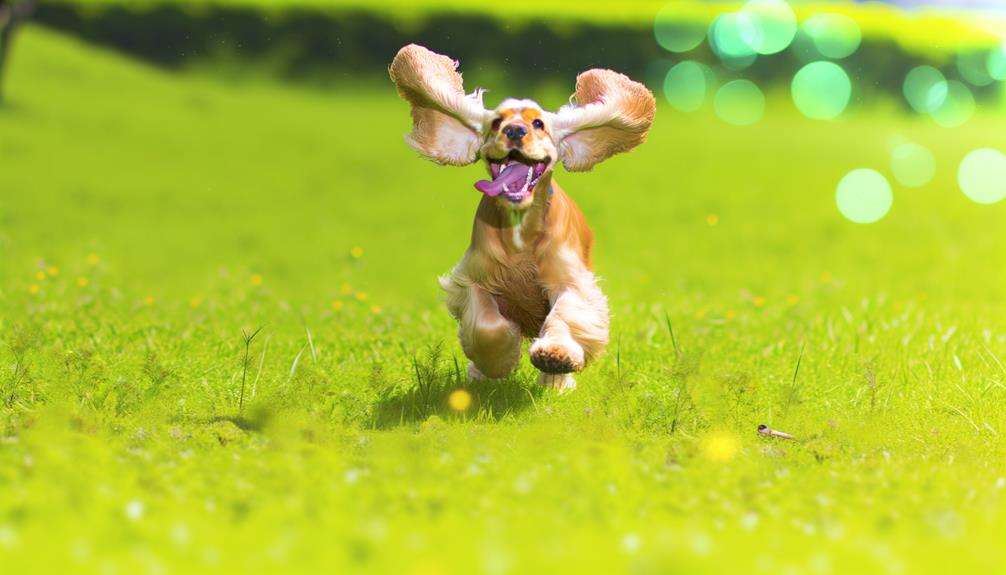Have you ever pondered why the Labrador Retriever holds such a steadfast place in the hearts of countless Americans?
Uncover the intriguing history and unique characteristics that have propelled Labs to the top of the canine kingdom.
From their versatile roles as service dogs to their vibrant array of coat colors, there's much more to these beloved companions than meets the eye.
Stay tuned to unravel the secrets behind why they remain America's favorite four-legged friends.
Key Takeaways
- Labrador Retrievers are popular in America for their friendly nature and sociable temperament.
- They require regular exercise, grooming, and healthcare to thrive as companions.
- Training is vital for enhancing their intelligence, work ethic, and bonding with owners.
- Their versatility in service roles like guide, therapy, and search and rescue makes them ideal companions.
Labrador Retriever History
Labrador Retriever history traces back to the Canadian province of Newfoundland, where early ancestors known as St. Johns Dogs laid the foundation for this beloved breed's origins. European fishermen played a pivotal role in the development of Labrador Retrievers by bringing these dogs to Newfoundland. These canines excelled in water activities, leading to their specialization in tasks such as retrieving fishing nets and rescuing items from the water. Through strategic breeding initiatives in England and Scotland, Labrador Retrievers evolved into a distinct breed known for their diving prowess and exceptional retrieving skills. The historical significance of Labrador Retrievers in Newfoundland fisheries can't be understated, as they were crucial to the success of various maritime operations.
Despite facing challenges like taxes and quarantine laws in Newfoundland, Labrador Retrievers found champions in British nobles who recognized their value. These nobles played a crucial role in importing Labrador dogs to England, ensuring the preservation of the breed's lineage. This period marked a significant turning point in Labrador Retriever history, paving the way for their eventual global popularity as America's favorite companion.
Characteristics of Labradors
The evolution of Labrador Retrievers from their early origins in Newfoundland showcases a distinct set of characteristics that define this beloved breed. Labrador Retrievers are renowned for their friendly and outgoing nature, making them ideal companions for families.
One of the defining features of Labradors is their coat colors, which come in three main variations: black, chocolate, and yellow, enhancing their visual appeal. With an average lifespan of up to 13 years, these dogs offer long-lasting companionship to their owners.
Labradors are often described as sweet-faced and lovable, traits that have significantly contributed to their status as America's favorite dog breed. Their sociable and amiable nature is evident in their friendliness towards strangers and other animals, making them excellent pets for social interactions and family settings.
The combination of their warm personality, diverse coat colors, and long lifespan makes Labrador Retrievers a cherished breed among dog lovers.
Training Labrador Retrievers
Effective training techniques play a crucial role in shaping the behavior and skills of these intelligent and eager-to-please canine companions, Labrador Retrievers. Known for their high trainability, Labs respond well to positive reinforcement methods, consistency, and patience. Whether it's obedience training, agility, retrieving tasks, or participating in canine sports, Labrador Retrievers excel due to their exceptional intelligence.
Early socialization and basic obedience training are vital for instilling good behavior and ensuring a well-adjusted Labrador Retriever.
To maximize training success, keep sessions short, engaging, and positive to maintain your Labrador's interest and motivation. Labs thrive on interaction with their owners, so incorporating play and praise into training sessions can be highly effective. Consistency in commands and expectations is key, as Labrador Retrievers are quick learners but can also become confused by mixed signals.
Labrador Retriever Colors
Labrador Retrievers display a range of common coat colors, including black, chocolate, and yellow. While black is the most prevalent color, chocolate and yellow variations are also popular among this breed.
Additionally, there are rare color variations like the controversial 'silver' coat, which isn't officially recognized by major kennel clubs.
Common Coat Colors
With three common coat colors, the Labrador Retriever showcases a diverse range of hues, from the popular black to the sought-after chocolate and the varying shades of yellow.
Black Labrador Retrievers are the most prevalent and well-liked among the breed, known for their shiny, jet-black coats.
Chocolate Labrador Retrievers boast a luscious brown color that many find irresistible.
Yellow Labrador Retrievers exhibit a spectrum of shades, ranging from a light cream to a deep golden hue, adding to the breed's visual appeal.
Despite the differences in coat color, all Labrador Retrievers share the same friendly and outgoing temperament.
Whether ebony, chocolate, or yellow, each color variation adds to the charm and allure of these beloved companions.
Rare Color Variations
Exploring beyond the common coat colors, Labrador Retrievers also exhibit rare color variations that add a unique twist to the breed's aesthetic spectrum. In addition to the well-known black, chocolate, and yellow Labradors, rare color variations such as silver, charcoal, and champagne exist within the breed.
These unique coat colors result from specific genes inherited from the Labradors' parents, showcasing the intricate genetics behind their appearance. Despite their rarity, Labradors with these unusual coat colors are still considered purebred and recognized by breed standards.
The presence of these rare color variations not only highlights the diversity within the Labrador Retriever breed but also adds an element of intrigue to these beloved companions.
Labrador Retriever Temperament
Renowned for their friendly and gentle disposition, the Labrador Retriever's temperament is a key factor in their widespread popularity as beloved companions. Here are three key aspects of the Labrador Retriever's temperament that contribute to their charm:
- Friendly Nature: Labrador Retrievers are known for their friendly and outgoing personalities. They've a natural affinity towards people, making them excellent family pets. Their friendly demeanor also extends to other animals, making them great companions in multi-pet households.
- Gentle Temperament: Labs have a gentle and kind temperament, which makes them well-suited for households with children. They're patient and tolerant, often handling the energy and playfulness of kids with ease. This gentle nature also makes them ideal therapy and service dogs.
- Non-aggressive Behavior: Labrador Retrievers are typically non-aggressive and have a low tendency towards aggression. Their even-tempered nature and lack of aggression make them a safe choice for families and individuals seeking a loyal and loving companion.
Labrador Retriever Health
The health of Labrador Retrievers is a crucial aspect of their overall well-being, requiring attentive care and preventive measures to address potential issues such as hip dysplasia and obesity susceptibility. Regular exercise and a balanced diet play a vital role in maintaining the health of Labrador Retrievers. Monitoring their weight is important as Labradors are predisposed to obesity. Additionally, regular veterinary check-ups, vaccinations, and parasite control are essential for their well-being. Responsible breeding practices can help reduce the risk of hereditary health conditions in Labrador Retrievers.
| Health Issue | Description |
|---|---|
| Hip Dysplasia | Common in Labradors; a malformation of the hip joint leading to arthritis |
| Elbow Dysplasia | A developmental malformation in the elbow joint causing lameness |
| Progressive Retinal Atrophy | Genetic disease leading to vision loss, affecting many Labradors |
Labrador Retriever Care Tips
Regularly engaging in interactive activities like walking, running, swimming, and playing is crucial to meet the exercise needs of Labrador Retrievers. To ensure your Labrador Retriever's well-being, here are some essential care tips:
- Grooming Practices: Labrador Retrievers have a low-maintenance coat that requires regular brushing and occasional baths to keep them clean and healthy. Additionally, focusing on grooming practices like dental care and overall hygiene is vital for their well-being.
- Balanced Diet: Providing your Labrador Retriever with a balanced diet, such as NutriSource, is essential for managing weight, maintaining lean body mass, and sustaining energy levels. A well-rounded diet will contribute significantly to your dog's overall health and happiness.
- Training: Training your Labrador Retriever isn't only about obedience but also about stimulating their intelligence, enhancing their work ethic, and nurturing their friendly disposition. Training sessions can be a great way to bond with your furry companion while ensuring their mental and physical well-being.
Labrador Retriever Exercise Needs
To maintain the optimal health and well-being of your Labrador Retriever, it's crucial to understand and address their specific exercise needs. Labrador Retrievers are energetic and active dogs that require a minimum of 30-60 minutes of exercise each day to stay healthy and content. Engaging in physical activities such as fetching, swimming, and running are ideal ways to meet their exercise requirements. Regular exercise not only helps prevent obesity in Labs but also promotes muscle strength and enhances their overall well-being.
Failure to provide enough exercise can lead to behavioral problems like restlessness, boredom, and destructive behavior in Labrador Retrievers. It's essential to tailor their exercise routines based on factors like age, health condition, and energy levels to ensure both physical and mental stimulation. By meeting their exercise needs appropriately, you can contribute significantly to your Labrador's happiness and overall quality of life.
Labrador Retriever as Service Dogs
Labrador Retrievers are highly sought after for service dog roles due to their exceptional qualities. Their intelligence, friendly nature, and adaptability make them ideal candidates for assisting individuals with various needs.
The rigorous training requirements ensure that Labs can excel in providing crucial support and companionship to those who rely on their specialized skills.
Service Dog Roles
Commonly utilized for their intelligence, trainability, and gentle demeanor, the Labrador Retriever excels in various service dog roles, including guide dogs for the visually impaired and assistance dogs for individuals with disabilities. Here are three key roles where Labrador Retrievers shine as service dogs:
- Guide Dogs: Labrador Retrievers are extensively trained to assist individuals with visual impairments, providing essential support in navigating their surroundings safely.
- Therapy Dogs: These dogs offer emotional support and companionship to people in hospitals, nursing homes, schools, and other settings, brightening the lives of those in need.
- Search and Rescue Dogs: Labrador Retrievers are often trained to locate missing persons in various terrains, using their keen sense of smell and agility to aid in rescue missions.
Training Requirements
With their innate intelligence and gentle temperament, Labrador Retrievers undergo rigorous training to fulfill the demanding requirements of service dog roles.
These versatile dogs are often selected for service tasks like guiding the visually impaired, assisting individuals with disabilities, and providing crucial emotional support.
Labrador Retrievers' exceptional work ethic and eagerness to please make them ideal candidates for service dog training programs. They excel in various roles, including therapy dogs, search and rescue missions, and medical alert assistance.
Training programs designed for service Labs emphasize obedience, socialization, specialized task training, and fostering strong bonds with their handlers.
The meticulous preparation of Labrador Retrievers as service dogs ensures they can effectively support and enhance the lives of those in need.
Famous Labrador Retriever Owners
Renowned figures from diverse fields, including politics, entertainment, and sports, have embraced the companionship of Labrador Retrievers, showcasing the breed's widespread appeal and popularity among the elite. Labrador Retrievers have found their way into the homes and hearts of many well-known individuals, further solidifying their reputation as America's favorite companion.
Here are three famous Labrador Retriever owners:
- Former U.S. President Bill Clinton welcomed a Labrador Retriever named Buddy into the White House, where the loyal companion became a beloved member of the family.
- Actress Jennifer Aniston proudly calls a Labrador Retriever named Norman her furry friend, adding warmth and joy to her life off the screen.
- Pro golfer Tiger Woods shares his love for the game with his Labrador Retriever companion, Taz, who not only enjoys chasing golf balls but also brings a sense of comfort and camaraderie on the golf course.
Frequently Asked Questions
Do Labs Only Have 1 Favorite Person?
Labrador Retrievers do not limit themselves to 1 favorite person. Their social behavior and attachment lead to strong bonds with multiple individuals. Labs display loyalty and bonding with all family members, spreading love and affection widely.
What Is the Best Companion Dog for a Labrador Retriever?
For your Labrador Retriever, the best companion dog is one that matches their energy level and social nature. Consider breeds like Golden Retrievers, Boxers, or Poodles. Focus on training tips, socialization techniques, exercise routines, and maintaining a healthy diet.
What Two Breeds Make a Labrador Retriever?
Labrador Retrievers are a result of a Golden Retriever mix and Labrador characteristics. The traits of both breeds blend to create the versatile and beloved Labrador Retriever we know today. Their origins lie in the unique fusion of genetics.
What Do Labradors Love the Most?
Playful Labradors love playing fetch and swimming in lakes. Their joy is palpable as they leap into the water, retrieving with a wagging tail. These activities enrich their lives, showcasing their exuberance and love for fun.
Conclusion
You've discovered why the Labrador Retriever remains America's favorite companion. Their history, characteristics, and temperament make them exceptional pets for individuals and families alike.
With proper training, care, and exercise, Labs can thrive as loyal and loving companions. Whether they're serving as service dogs or charming famous owners, these versatile canines continue to win hearts across the country.
Embrace the Lab's irresistible charm and make them a part of your life today!






